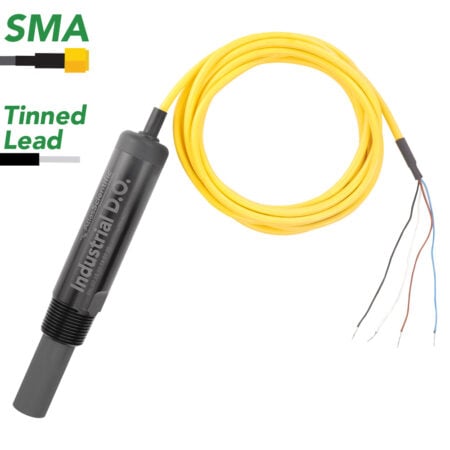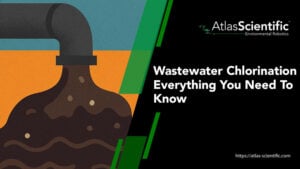Subtotal: $354.99

How To Reduce TDS Of Water?
Reverse osmosis is still a very good and popular way to reduce TDS, but there are many alternatives that might be better for your particular evil
Product Categories

Dissolved oxygen refers to the amount of oxygen dissolved in water. When dissolved oxygen levels become too low, aquatic organisms cannot survive, and water quality is affected. The main causes of low dissolved oxygen in water are increases in temperature, decaying organic matter from aquatic plants and algae, and weather changes.
Dissolved oxygen (DO) is a key indicator of water quality. Fish and other aquatic organisms need DO to survive, therefore when the water has a low DO level, water conditions can quickly become lethal.
In aquatic and drinking water systems, dissolved oxygen levels should be above 6.5-8 mg/L and between 80 and 120% to be considered safe. When DO levels drop below 5 mg/L any aquatic life present is put under extreme stress. If DO levels remain below 1-2 mg/L longer than a few hours it can result in fish death.
Dissolved oxygen levels are continually influenced by diffusion, aeration, photosynthesis, respiration, and decomposition. Therefore temperature, salinity, and pressure changes frequently cause fluctuations in the amount of dissolved oxygen in the water.
Waters that have hypoxic environments or dead zones are usually due to fertilizers fuelling the overproduction of algae and phytoplankton, creating algal blooms. Algal blooms create anoxic conditions lowering the DO levels in the water, trapping juvenile fish and eggs, which often results in killing them.
Areas, where hypoxia has occurred naturally, are not considered dead zones as most local aquatic life have adjusted to the low-DO levels over time.
Excessive algae growth from nutrients like nitrogen and phosphorus is the main cause of low DO levels in the water. For algae to decompose, oxygen is required, therefore the amount of DO available for fish and other aquatic organisms is greatly decreased, impacting fish health, typically killing them. Decomposition of submerged aquatic plants and phytoplankton is also a cause of low DO in water.
To understand this process we can look at how microbes, like bacteria, require dissolved oxygen. Bacteria use DO for the decomposition of organic matter, which is critical for nutrient cycling in water. When there is an excess of decaying organic matter like plants and algae, the microbes must consume more in a shorter period, therefore they consume more DO in the water to drive the process, reducing DO levels in the water for fish and other aquatic animals.
This process of decomposition is known as CBOD – carbonaceous biochemical oxygen demand.
Phosphorus from municipal wastewater treatment systems, urban stormwater runoff, and vegetation decay add to CBOD loadings when they discharge into rivers and other waterway systems, lowering the amount of dissolved oxygen in the water.
Temperature and DO levels are closely related; when water temperature increases, the amount of DO in water is reduced.
As fish are cold-blooded, they must regulate their body temperature with the surrounding water. When water temperatures increase, fish occupying the space speed up their metabolic rate by consuming more oxygen.
Weather also greatly influences DO levels in the water. When it is cloudy, oxygen production from aquatic plants and algae is reduced or completely stopped. This is due to an increase in cloud coverage, which depletes the amount of light that can be penetrated into the water to drive photosynthesis.
In addition to poor weather from cloudy days, windless days also lower DO levels in the water. When wind speed is reduced the water cannot circulate and surface diffusion from atmospheric oxygen is limited.
On hot days and during summer months, deep water bodies like ponds and lakes, experience stratification. During this time, water temperatures near the surface increase and become less dense than deeper water, which is cooler in temperature.
As the summer months continue, the deeper water becomes stagnant (water that has no current or flow), lowering the amount of dissolved oxygen. This becomes a problem when the top, water layer, cools down from heavy rainfall or colder atmospheric air and mixes with the deeper water which contains little to no oxygen. If this happens it will harm fish, and could potentially cause die-offs.
As dissolved oxygen is key for health and reproduction in many fish and invertebrates, prolonged exposure to low DO levels increase stress and diseases, and in some cases, leads to organism death.
Lethal DO levels for fish are between 1 and 3 mg/L, which is why it is important to test DO levels in different water bodies.
While DO levels below 3 mg/L are usually lethal for fish and some invertebrates, some aquatic organisms have adapted to tolerate lower DO levels in the water.
Some fish can physiologically adapt to low-DO levels in the water by increasing how much water flows over their gills. This lowers their metabolic oxygen demand by increasing oxygen-carrying blood levels. Fish adaptations like this cannot happen overnight. It takes long-term exposure to low or even sublethal DO levels in the water, and while some aquatic organisms can adapt, many cannot and will die in such conditions.
In aquariums with low DO levels, it is critical to increase oxygen levels in the fish tank immediately to avoid any fish loss.
You can increase DO levels by incorporating the following in water:
As already mentioned, measuring DO is important to ensure water is safe for aquatic life and human consumption. When measuring water quality, healthy water should have a DO concentration above 6.5-8 mg/L (80-110%).
You can test dissolved oxygen in water using electrochemical analysis (DO probe/sensor), photochemical analysis, or chemical analysis (the basic titration method).
Using a DO probe is the most accurate and preferred method. For more information on how to use a DO probe, we have an easy step-by-step guide here.
Dissolved oxygen is a key indicator of water quality. It is essential for fish and other aquatic organisms to survive, therefore when the water has a low dissolved oxygen level (<6.5 mg/L), water conditions soon become lethal.
Temperature increases, decaying aquatic plants and algae, fertilizers, and weather changes are common causes of low dissolved oxygen in the water.
If you have any questions regarding dissolved oxygen, other water quality measurements, or what dissolved oxygen probes will best suit your needs, please do not hesitate to reach out to the world-class team at Atlas Scientific.







Reverse osmosis is still a very good and popular way to reduce TDS, but there are many alternatives that might be better for your particular evil

Wastewater chlorination adds chlorine compounds to wastewater that produce “free chlorine,” which destroys pathogens by damaging cell membranes, disrupting cellular respiration, and rendering enzymes non-functional.